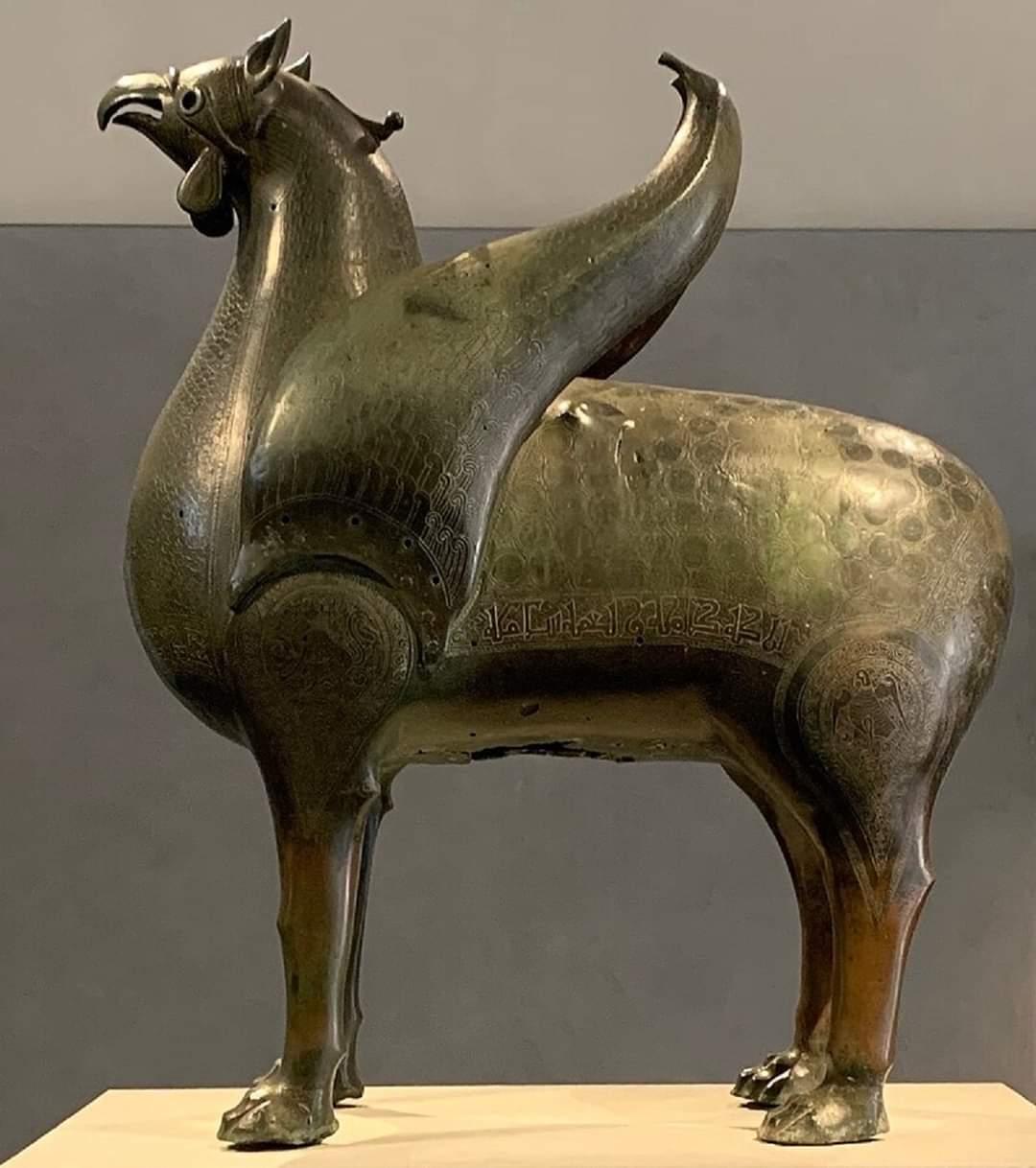Archaeo-Histories on Nostr: The Pisa Griffin, probably created in the 11th century in Al-Andalus, is the largest ...
The Pisa Griffin, probably created in the 11th century in Al-Andalus, is the largest Islamic figurative sculpture to survive. Nearly a meter tall in bronze, it was designed to spout water for a fountain, and probably only survives because it was taken as booty by the city of Pisa in the Middle Ages. It is still there, proudly exhibited at the Museo dell'Opera del Duomo.
#archaeohistories

Published at
2024-09-29 14:34:25Event JSON
{
"id": "4c119aa60e934cdf7695dd08fb6618a1ee2d33b8b222966f89f1c8ef62f94d7d",
"pubkey": "7670271d5ab459d7b523316b2a3b72b86ca991879c097491be74301b9ff77c2c",
"created_at": 1727620465,
"kind": 1,
"tags": [
[
"t",
"archaeohistories"
],
[
"proxy",
"https://ohai.social/users/archaeohistories/statuses/113221334822352436",
"activitypub"
]
],
"content": "The Pisa Griffin, probably created in the 11th century in Al-Andalus, is the largest Islamic figurative sculpture to survive. Nearly a meter tall in bronze, it was designed to spout water for a fountain, and probably only survives because it was taken as booty by the city of Pisa in the Middle Ages. It is still there, proudly exhibited at the Museo dell'Opera del Duomo.\n\n#archaeohistories\n\nhttps://files.ohai.social/media_attachments/files/113/221/334/734/574/634/original/4c67b5b5ebff645e.jpg",
"sig": "73f88e4553ad6366e7228567796d88eb3802a9d58ae09160985612003c49a0a1289982d87c6d3f0c160445f39480a2c1dc8990d7cc5d68d8a513183f8428124e"
}

